
MENZZOO MAGAZINE

10 MUST SEE TEMPLES IN SIEM REAP
Temples in Siem Reap attract millions of visitors each year, especially those in the expansive Angkor Archaeological Park. Listed as a UNESCO World Heritage site in 1992, there are approximately 50 Buddhist and Hindu temples dating back to the 12th century within its grounds. While most of the structures have collapsed and been covered in greenery, history buffs will delight in the many well-preserved stone carvings as they provide a glimpse of the once-prosperous Khmer empire.
Further away from downtown Siem Reap are other notable Hindu temples, some of which are older than the iconic Angkor Wat. A full-day excursion is highly recommended to explore these sites, but they’re well worth the extra effort as you’ll get to enjoy breathtaking sights and the tranquil countryside along the way. Before visiting Angkor Wat and other renowned sites in Siem Reap, you're required to purchase an Angkor Pass, which is priced around $37USD for a 1-day pass, $62USD for a 3-day pass, and $72USD for a 7-day pass. Read on for our comprehensive list of Siem Reap’s most popular temples.
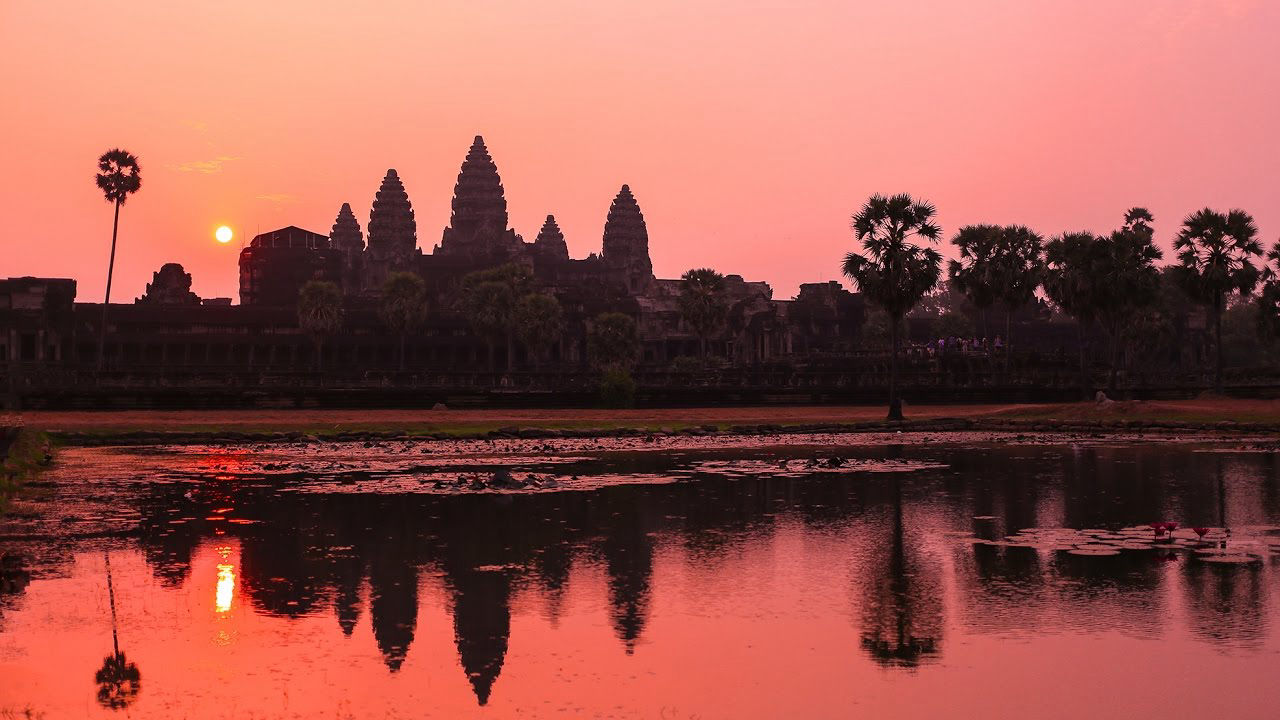
1. ANGKOR WAT
Angkor Wat, listed as a World Heritage site in 1992, is Siem Reap’s most iconic temple. Located within the expansive Angkor Archaeological Park, it was constructed during the 12th century to worship the Lord Vishnu (a Hindu deity) and, according to scholars, served as a funerary temple for King Suryavarman II.
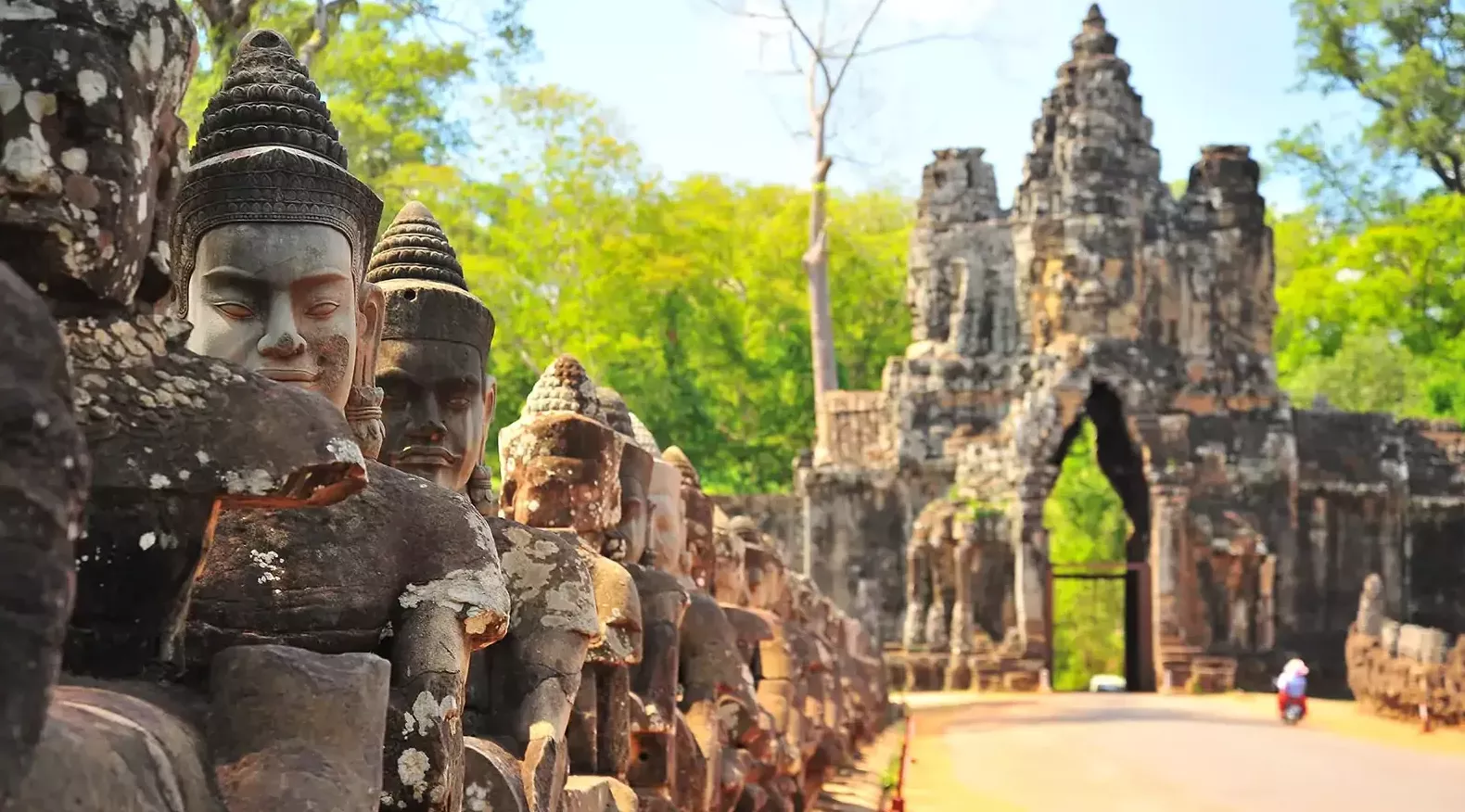
2. ANGKOR TOM
Angkor Thom or Big Angkor was constructed by King Jayavarman VII (1181-1219) as the last capital city of the Angkorian era. The largest site in the Angkor Archaeological Park, 5 20-metre-tall gates surround Angkor Thom, with intricate stone carvings of elephants and the 4-faced Bodhisattva Avalokiteshvara, while causeways leading to the gates are flanked with 108 statues of gods and demons.
Location: Angkor Archaeological Park, Siem Reap, Cambodia-Open: Daily from 7.30am to 5.30pm
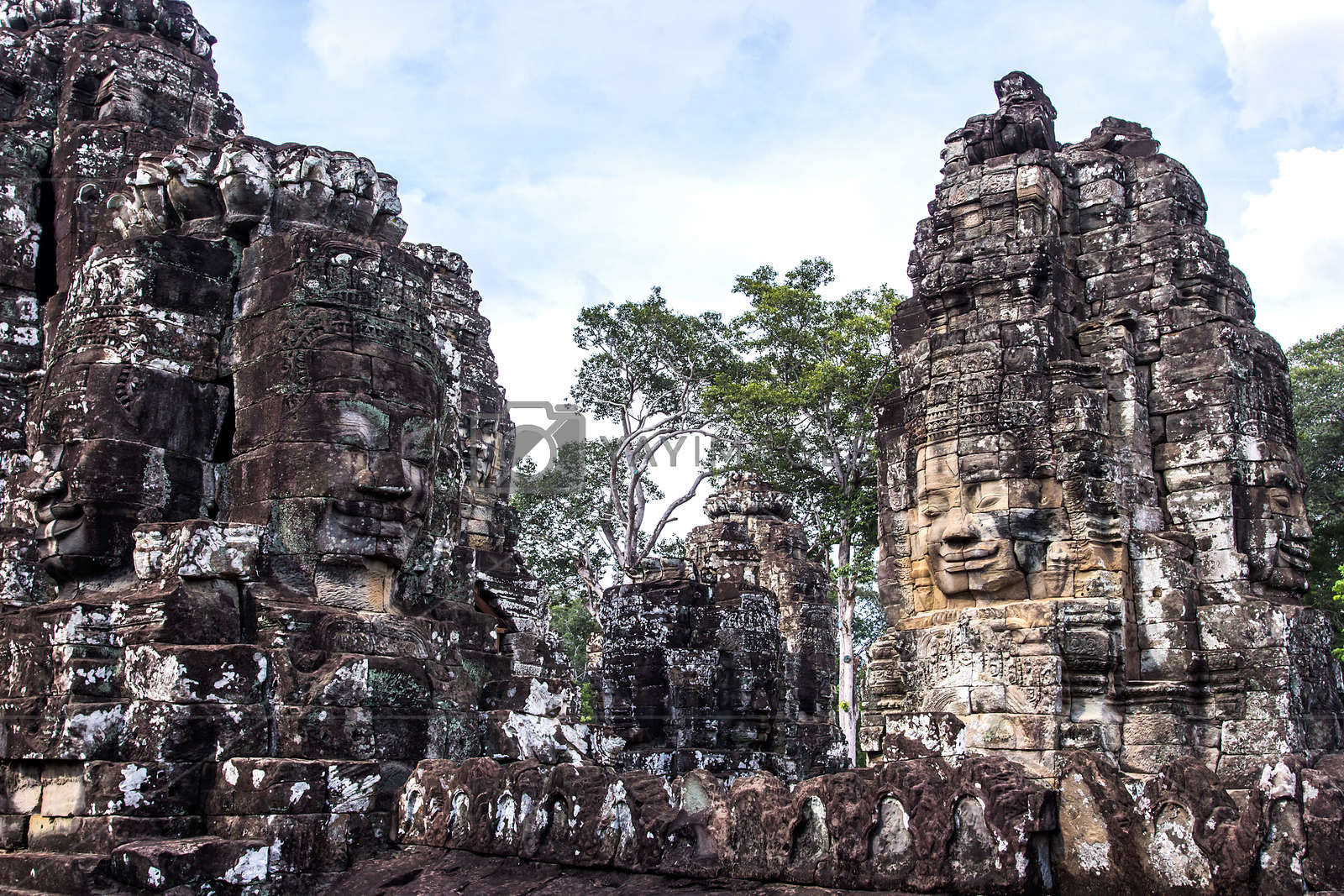
3. BA YON TEMPLE
Ba Yon Temple features approximately 50 stone towers intricately carved with the 4 faces of Bodhisattva Avalokiteshvara on most of them. Set in the middle of Angkor Thom, it was built in the late 12th century to serve as the official state temple of Mahayana Buddhist King Jayavarman VII.
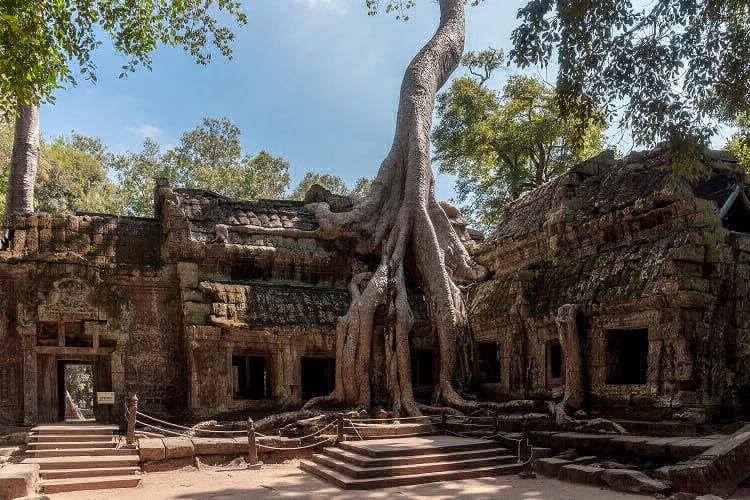
4. TA PHROM TEMPLE
This tranquil monastery was built during the mid-12th century by King Jayavarman VII in commemoration of his mother. Fitted with 600 rooms, courtyards and galleries, it was believed to have housed a population of over 70,000 people, most of them being high priests, monks, assistants, dancers, and labourers.
It's the only major site that wasn't fully reclaimed from the jungle. Many of the walls and structures have been smothered by huge silk-cotton trees and strangler figs, which grow over, around, and through the ancient stone blocks. These trees both hold the ruins together and cause them to collapse.
The temple contains a maze of courtyards and galleries, and it is well worth spending some time to explore its many dark corridors. Some walls and doorways of the ancient buildings have been left overgrown and gripped by huge trees and other foliage. Flocks of parrots in the trees add to the atmosphere and give you the feeling of discovering a temple lost in the jungle. With this image in mind, it's not hard to imagine what the French naturalist Henri Mouhot must have felt when he ‘discovered’ the temple in 1860.
A visit to Ta Prohm really gives you the feeling of discovering something hidden and truly ancient, it's also worth mentionng Ta Phrom served as a set for the 2001 movie, Tomb Raider.
Location: Angkor Archaeological Park, Siem Reap, Cambodia-
Open: Daily from 7.30am to 5.30pm
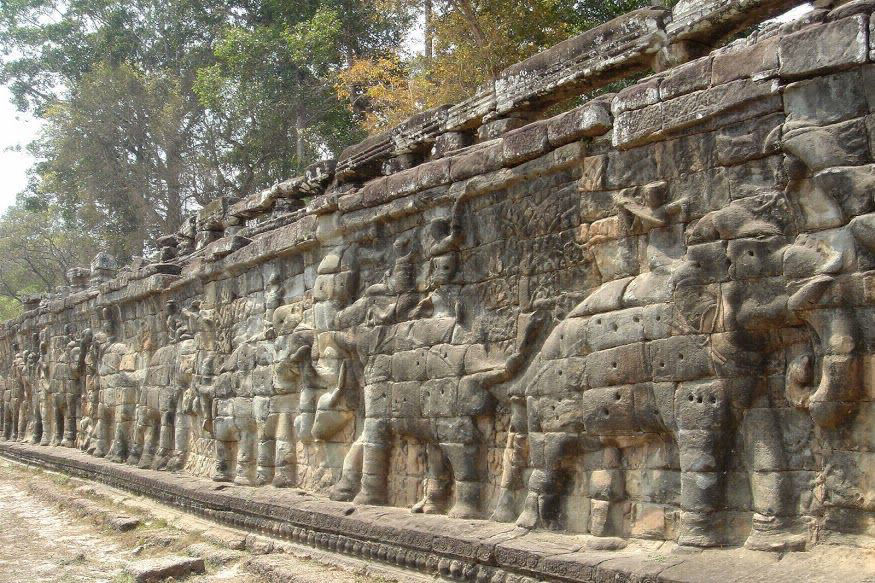
5. THE TERRACE OF THE ELEPHANTS
The Terrace of the Elephants in the centre of Angkor Thom features beautiful bas-relief scenes of elephants and garudas, making it one of the most photographed sites in Angkor Archaeological Park. Utilised by King Jayavarman VII as a viewing platform for public ceremonies during the late 12th century, the striking terrace measures at 300 metres in length and 2-and-a-half metres in height.
The northern part of the Terrace of the Elephants' wall contains many especially fine sculptures, including a 5-headed horse and garudas (bird-like humanoid creatures from Hindu and Buddhist mythology) as well as dancers and warriors. At the very end of the terrace, you'll get to the Terrace of the Leper King, also built during Jayavarman VII's reign.
Location: Angkor Archaeological Park, Siem Reap, Cambodia-
Open: Daily from 7am to 5.30pm
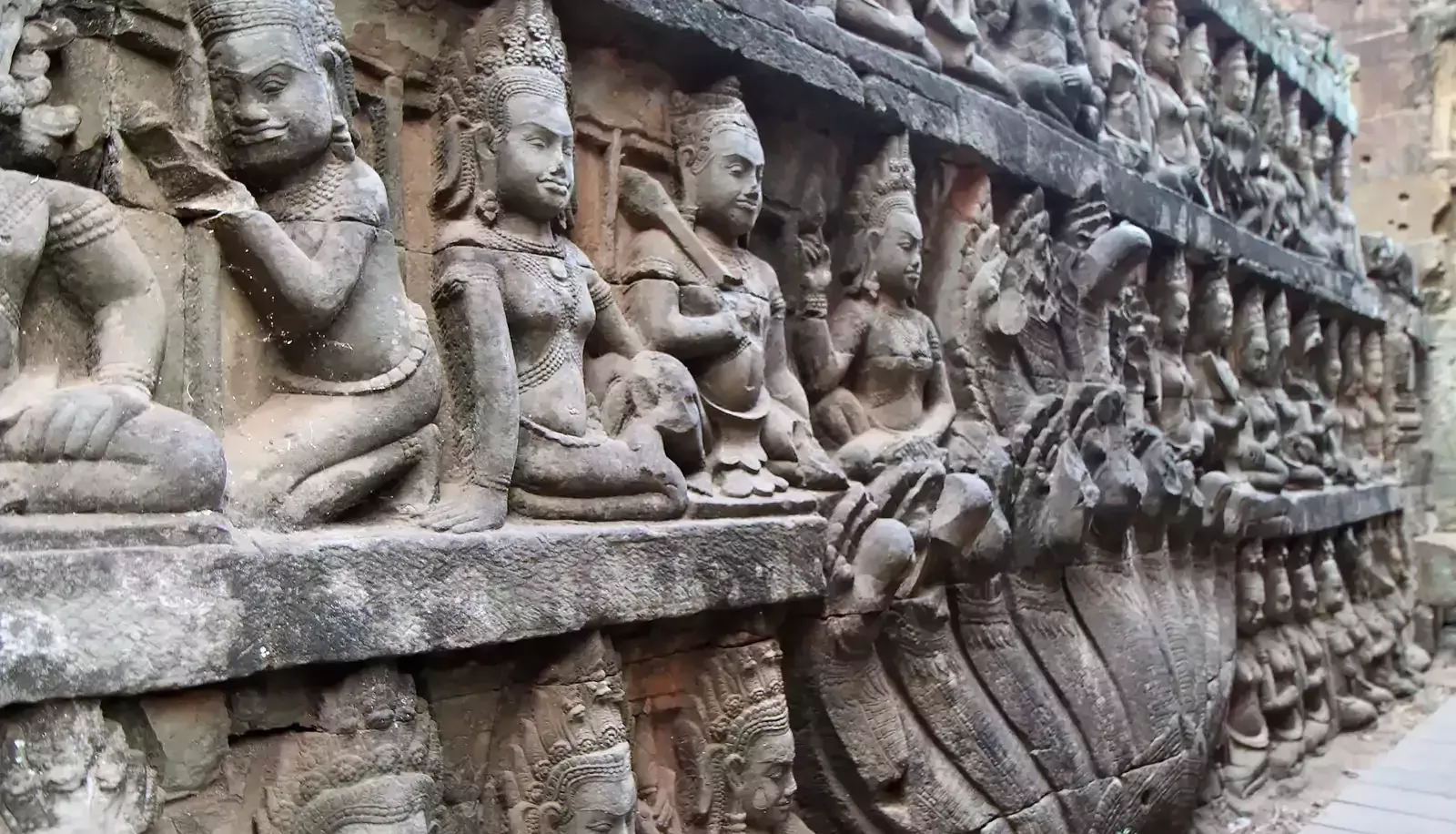
6. THE TERRACE
OF THE LEPAR KING
The Terrace of the Leper King has carvings of nagas (dragons), demons and various mythical beings. The inner wall was built first, and the outer wall was added later covering the inner wall. Archaeologists excavated the inner wall in the late 1990s.
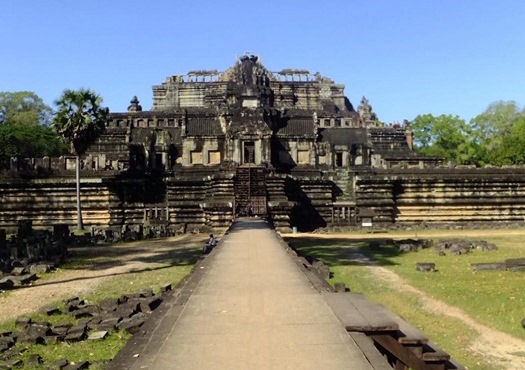
7. BA PHUON TEMPLE
Ba Phuon Temple is a 3-tiered temple mountain that was built in honour of the Hindu God Shiva and served as the state temple of Udayadityavarman II during the mid-11th century. Located northwest of Ba Yon Temple, its pyramid-like shape is an architectural representation of the mythical Mount Meru.
The Baphuon Temple is one of the quieter of the main Angkor ruins, despite being almost right next to the Bayon Temple, with the Terrace of the Elephants nearby. With large, open grounds, the temple is almost palatial, creating a peaceful place to enjoy the open air and the impressive architecture.
Location: Angkor Archaelogical Park, Siem Reap, Cambodia-
Open: Daily from 7am to 5.30pm
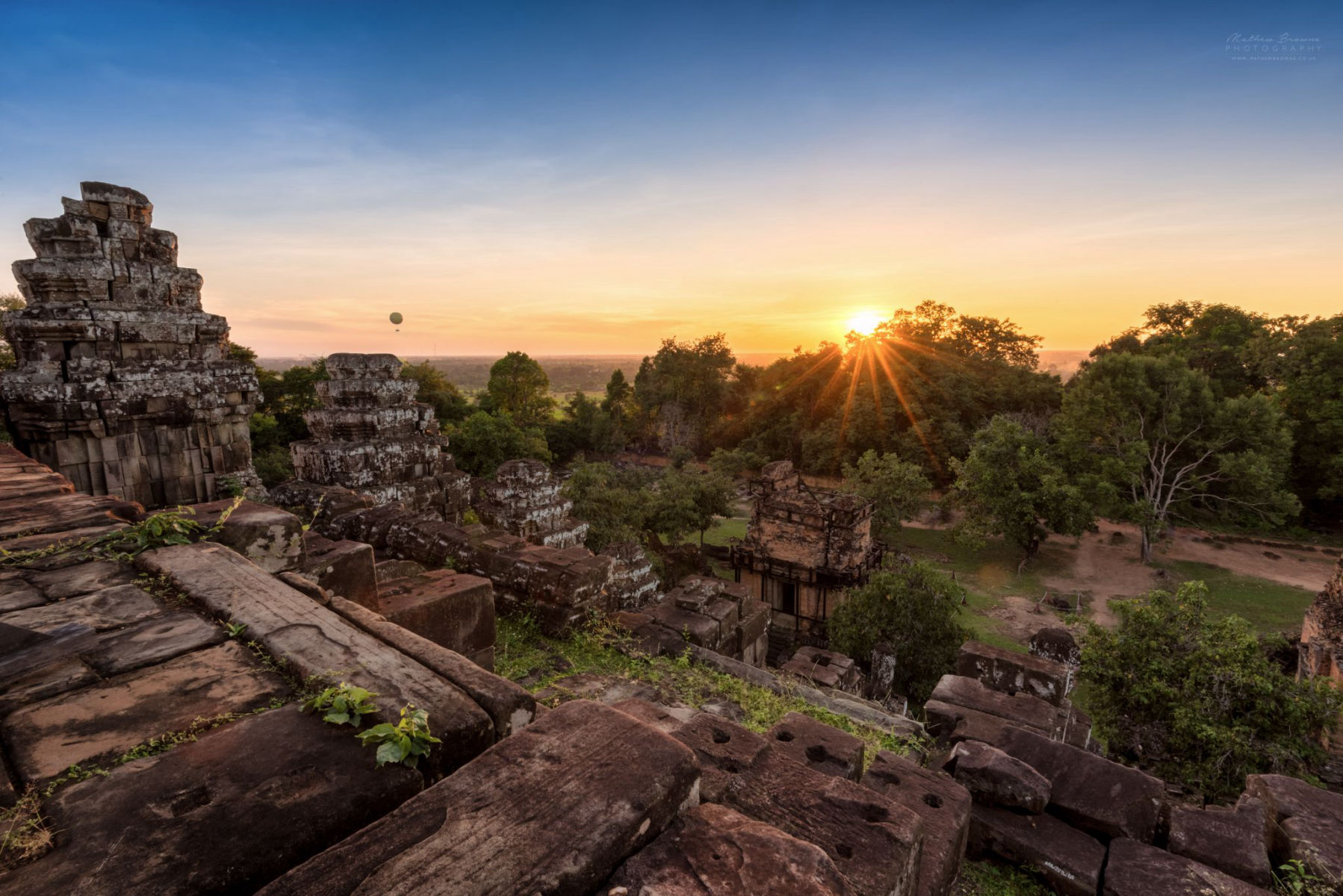
8. PHNOM BAKHENG
Phnom Bakheng (Bakheng Hill) is a major temple what was built after the capital was moved from Roluos during the 9th century. Constructed over 2 centuries before the iconic Angkor Wat, this temple-mountain represents Mount Meru, home of the Hindu gods, and served as the state temple of King Yasovarman I.
Phnom Bakheng was constructed on the 79-metre-tall Bakheng Hill and was the first major temple to be built at Angkor after the capital was moved from Roluos in the 9th century, 2 centuries before Angkor Wat. It was the state-temple of King Yasovarman I, at the heart of the new capital city of Yasodharapura.
Phnom Bakheng is the best place to view the sunrise or the sunset from, its location 1.5 km northwest of Angkor Wat also makes it a great spot for an elevated perspective of the more famous temple.
Location: Angkor Archaeological Park, Siem Reap, Cambodia -
Open: Daily from 5am to 5pm
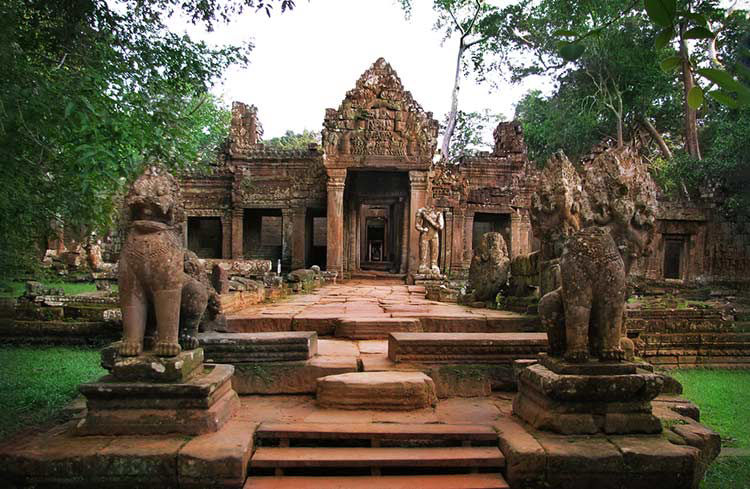
9. PREAH KHAN TEMPLE
The Preah Khan (Sacred Sword) temple complex is surrounded by a wide moat and features walls decorated with carvings of garudas, a bird-like mythical being in Hindu mythology. Dedicated by the King Jayavarman VII to his father in 1191, it houses maze-like entryways, towers, ceremonial spaces, courtyards, and shrines.
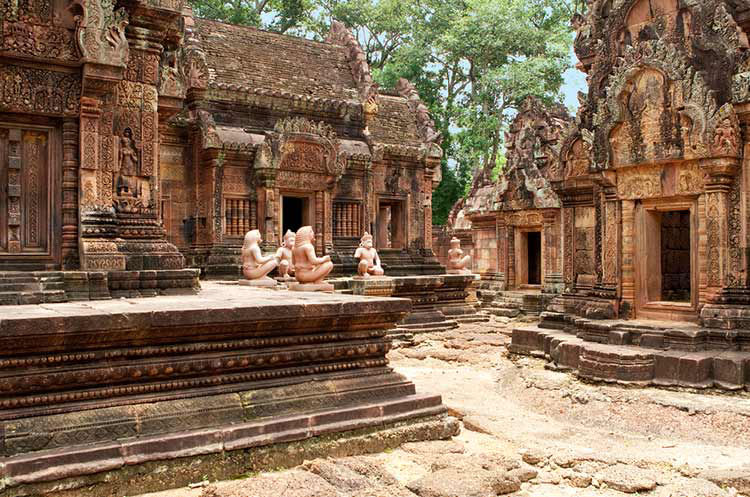
10. PRASAT BANTEAY SREI
Prasat Banteay Srei is a 10th-century Hindu temple that boasts some of the most well-preserved relics in Siem Reap. Unlike the temples in Angkor Archaeological Park, it was built by a Brahmin counsellor to King Rajendravarman. Locally known as the ‘citadel of the women,’ Prasat Banteay Srei is fitted with pink sandstones and 3-dimensional carvings of scenes from the Ramayana epic, as well as female deities in traditional attire carrying lotus flowers in each hand.
Mobirise web software - Try here